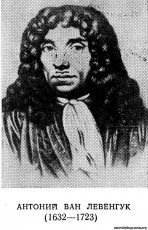Microbiology Development History
 Robert Koh, a modern Paster, has made a huge contribution to the development of medical microbiology, has opened and studied the instigators of such severe infectious diseases as tuberculosis and cholera. Microbial science is the responsibility of Coho to improve microbial, technical and microorganisms that have helped to explore the building of many microbes, used lighting (Abbe lighter) in microscopes, and introduced microphotographs. The methods of microbiological research developed by Kohom have yielded a clean culture of congeners of infectious diseases (macro-organisms of only one type). This was made possible when micro-organisms were growing on tight nutrients proposed by Koh. In these environments, the population of microorganisms growing in the form of a colony can be obtained from one cell. It has been possible to examine not only morphology, but also the physiological and biochemical properties of microbes, their ability to cause disease in experimental animals. These methods over 10 to 20 years have opened, described and studied many communicable diseases and have served as the basis for the development of medical microbiology. Koch tried to prepare a tuberculosis for the treatment of this disease, a tuberculin representing the life of the instigator. Tuberculin, however, was not effective in treating the disease. It is now successfully used for a diagnostic purpose (Pirke ' s and Manto ' s tests), detecting the human exposure to tuberculosis.
Robert Koh, a modern Paster, has made a huge contribution to the development of medical microbiology, has opened and studied the instigators of such severe infectious diseases as tuberculosis and cholera. Microbial science is the responsibility of Coho to improve microbial, technical and microorganisms that have helped to explore the building of many microbes, used lighting (Abbe lighter) in microscopes, and introduced microphotographs. The methods of microbiological research developed by Kohom have yielded a clean culture of congeners of infectious diseases (macro-organisms of only one type). This was made possible when micro-organisms were growing on tight nutrients proposed by Koh. In these environments, the population of microorganisms growing in the form of a colony can be obtained from one cell. It has been possible to examine not only morphology, but also the physiological and biochemical properties of microbes, their ability to cause disease in experimental animals. These methods over 10 to 20 years have opened, described and studied many communicable diseases and have served as the basis for the development of medical microbiology. Koch tried to prepare a tuberculosis for the treatment of this disease, a tuberculin representing the life of the instigator. Tuberculin, however, was not effective in treating the disease. It is now successfully used for a diagnostic purpose (Pirke ' s and Manto ' s tests), detecting the human exposure to tuberculosis.
Paster and Koha ' s work has led to further advances in microbiology. The end of the nineteenth century and the beginning of the twentieth century are characterized by the discovery, description and study of various congeners of infectious diseases. In 1884, Ebert and Gaffki described the abdominal typhoid typhoid driver, Nicholaser and Quitazato, tetanus, Kitazato and Yersen, the tip buoyant. The German doctor Laffler first found a diphtheria driver named Laffler's stick. The English researcher, David Bruce, opened in 1886 a fever in Malta. In honor of this discovery, the patient was called a bracella and the disease was a bracellia. At that time, it was shown that alcohol can be a source of very severe human diseases. In 1868, Obermeyer opened a spirochet, a stirr... ♪








